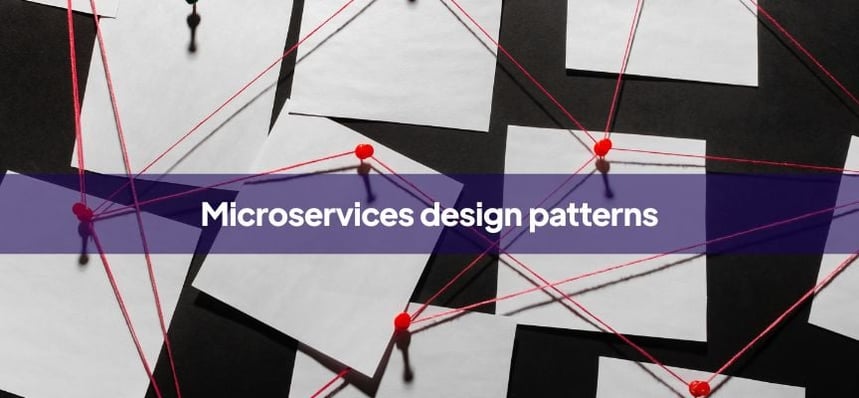Building and maintaining scalable, efficient, and reliable software applications has never been a stronger imperative for software providers. At the same time, the rise of microservices architecture unlocks new opportunities for software products to be built as agile, highly adaptable, and easy to maintain. However, this architecture may face challenges such as communication breakdown, distributed transaction rollback, and centralized logging.
This is where microservices design patterns come in. There are several design patterns available for microservices architecture use cases, each serving a specific purpose in building and maintaining a scalable and efficient microservices architecture.
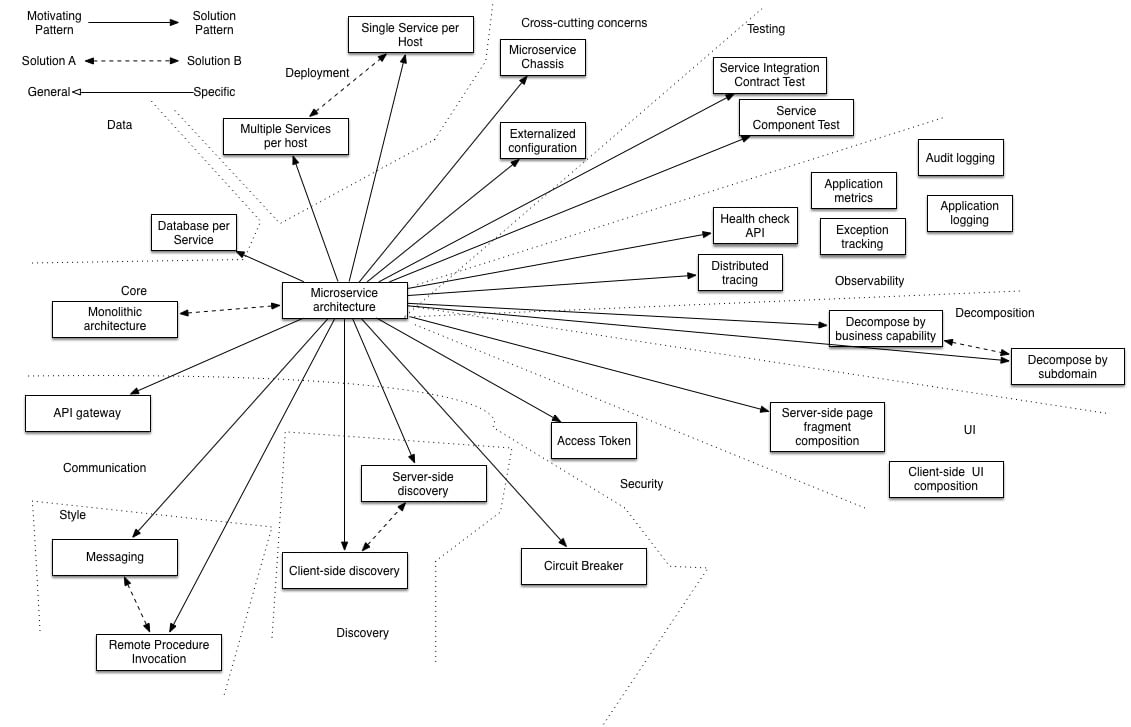
A thorough understanding of the different microservices design patterns is the first step to selecting the most fitting ones for specific use cases, so let's dive right in:
Decomposition patterns
These patterns help split a monolithic program into smaller microservices.
One such pattern is decompose by business capability, which segments services based on their respective business functions (for instance, order administration, inventory management, payment processing, shipping, and other issues are all included in an eCommerce product). The architecture is steady because business capabilities are generally stable, while development teams are set up to produce commercial value rather than technical features.
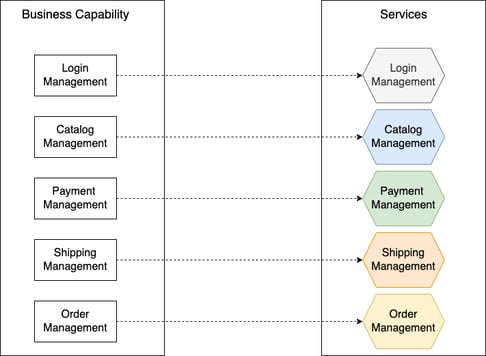
Another pattern is decompose by subdomain, which builds complex software applications using the domain-driven design (DDD) method, creating a unique domain model for each subdomain. The architecture is stable because the subdomains are largely stable, while development teams become cross-functional, independent, and committed to producing commercial value as opposed to technical features.
Lastly, the decompose by strangler pattern is utilized for converting old monolithic programs to a microservice design. With this paradigm, monolithic programs may be progressively changed by swapping out a particular capability for a new service. The old component is killed as soon as the new service is available, and the new service is used while the old component is shut down. Microservices will gradually replace the whole functionality of the monolithic application, which will eventually become less functional.
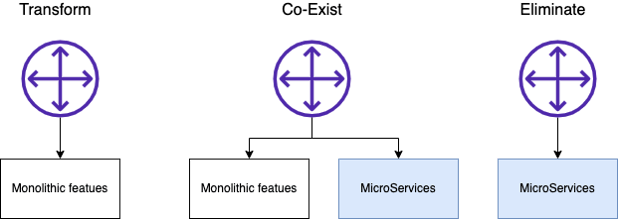
Integration design patterns
These design patterns handle the communication between different microservices, ensuring high performance and response times:
- The API Gateway pattern serves as a service that allows users to access the application from the outside, handling request routing, API composition, authentication, monitoring, and rate-limiting.
- The Aggregator pattern sends requests to other services, aggregates the results, and finally answers the initial request.
- The Proxy pattern uses a different microservice depending on the business need
- The Chained Microservice pattern produces a single, aggregated answer to the request.
Database design patterns
These patterns assist in creating the database for the microservices architecture, including distributed transaction management across microservices, utilizing a single shared database or a separate database for each microservice:
- The Database Per Service Pattern provides specific databases for specific use cases, granular control and scaling, and lessening blast radius.
- The Shared Database per Service pattern shares the same database among multiple microservices
- The Command and Query Responsibility Segregation (CQRS) Pattern differentiates between modifying and obtaining data.
- The Event Sourcing pattern stores data as a sequence of events and isolates read from write workloads to optimize efficiency, scalability, and security.
- The Saga Pattern ensures data consistency in distributed systems.
Observability patterns
These are critical to designing the microservices for proper monitoring and telemetry, including centralized logging, distributed tracing, performance metrics, and health check of the microservice instances:
- The Log Aggregation Pattern aggregates logs from various services
- The Performance Metrics pattern measures the performance of each service
- The Distributed Tracing pattern tracks requests as they flow across microservices
- The Health Check pattern ensures that microservice instances are functioning correctly.
Cross-cutting concerns design patterns
Finally, these design patterns deal with how microservices discover each other, how to externalize the microservices configuration, how to handle service failure using a Circuit Breaker, and how to deploy microservices:
- The External Configuration Pattern externalizes configuration parameters from code to environment variables
- The Service Discovery Pattern enables microservices to discover each other
- The Circuit Breaker Pattern prevents cascading failures
- The Blue Green Deployment Pattern allows the deployment of new services without downtime.
Understanding the different design patterns for microservices architecture is essential for any software provider looking to build and maintain scalable and efficient applications. Selecting and using the right patterns can ensure a software product that's reliable, maintainable, and highly adaptable to change.
Overall, the microservices architecture should be highly available and resilient, withstanding any failures and scalable to meet increased demand. It should also be observable, easy to monitor and track in terms of performance with quick ability to detect and resolve issues. Microservices should communicate effectively, be easy to configure, handle failures gracefully, and allow for quick deployments with minimal downtime.
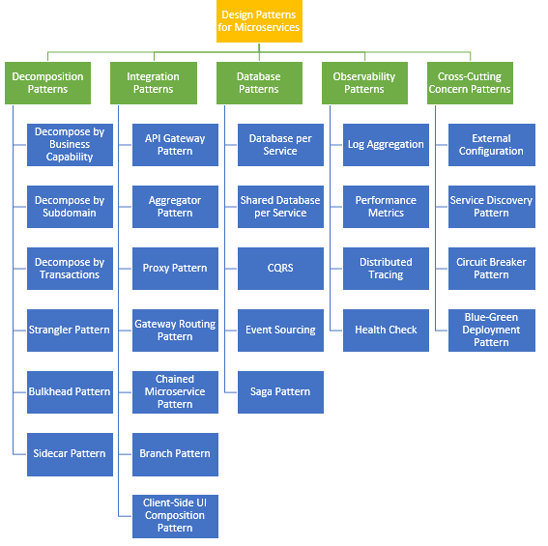
Kubeark's platform engineering capabilities enable quick deployment of applications or services, while also simplifying governance and change management. Based on microservices architecture, Kubeark empowers teams to take control of complex technical development and easily deploy, manage, and scale software on any infrastructure, unlocking business potential with seamless deployment, lifecycle management, and infrastructure cost optimization.
With Kubeark, Product teams can take their business to the next level while easing their minds about scalability hurdles and performance and reliability concerns. To discover more and get a tailored understanding of what you can achieve, get in touch today.
